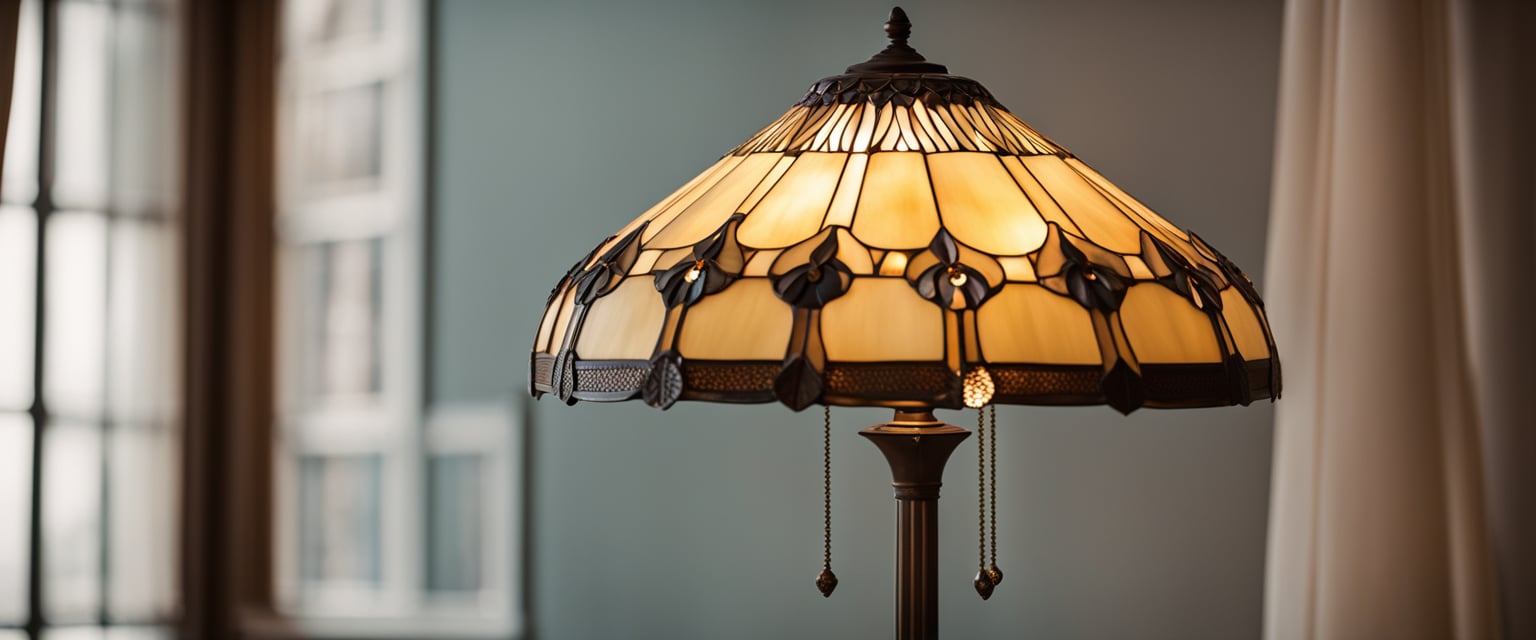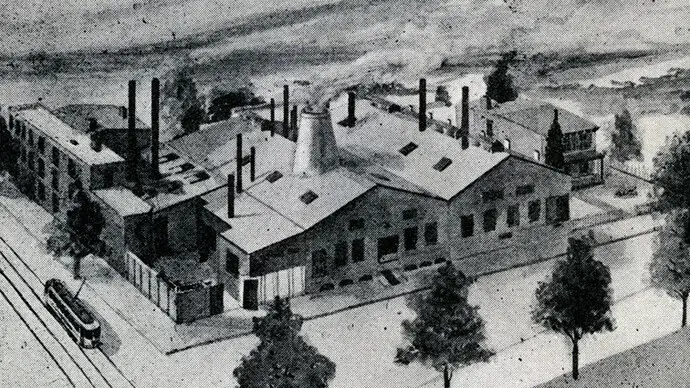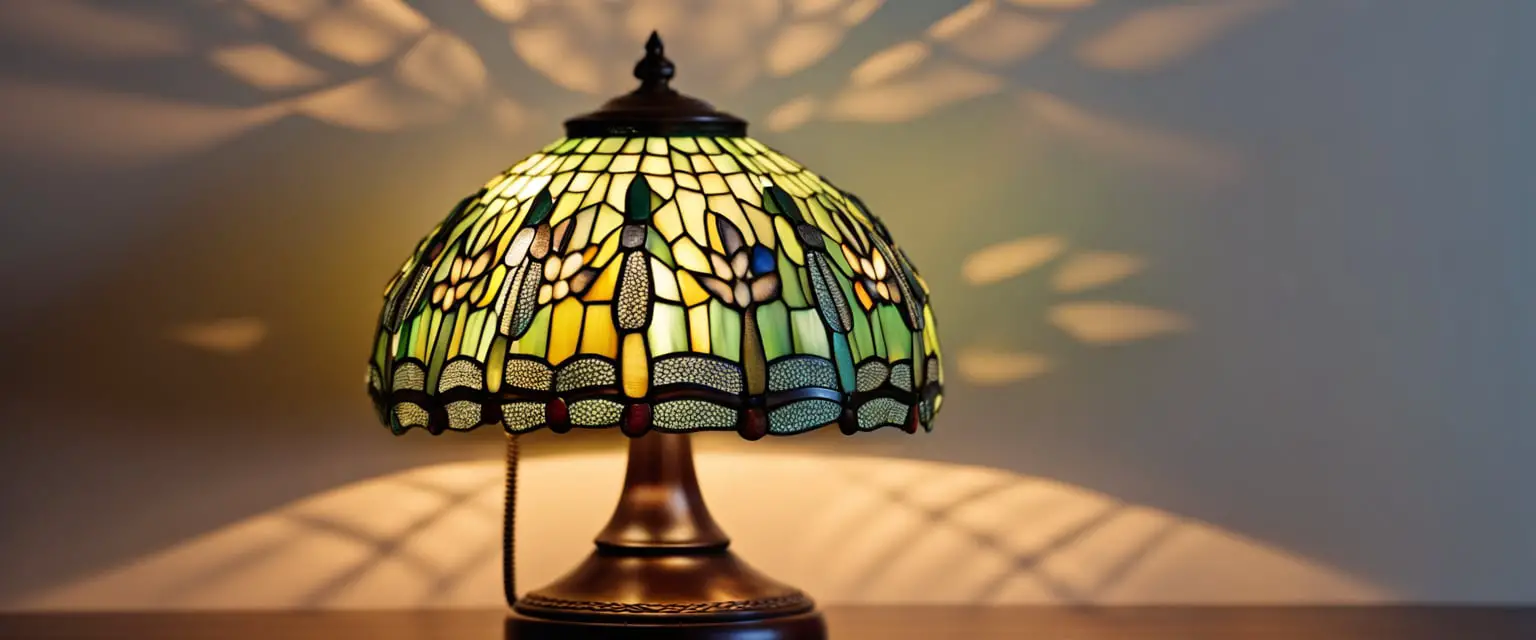Antique Tiffany Floor Lamps exude timeless elegance and artistry. They are characterized by their ornate stained glass shades and intricate metalwork, representing the pinnacle of the Art Nouveau movement. Real Tiffany Floor Lamps encompass the exquisite craftsmanship and historical significance of these iconic lighting fixtures, revered for their enduring beauty and the masterful fusion of form and function that defines them.
This post aims to illuminate the enchanting world of Antique Tiffany Floor Lamps, offering a captivating exploration of their rich history, exceptional craftsmanship, and enduring allure. Whether you’re a seasoned collector seeking to deepen your understanding of these timeless treasures or simply fascinated by the beauty of vintage lighting, delving into the realm of Antique Tiffany Floor Lamps will unveil the artistry and historical significance that continues to captivate enthusiasts and collectors worldwide.

Table of Contents
Understanding Tiffany Floor Lamps
Tiffany floor lamps have been popular for over a century. They were designed by Louis Comfort Tiffany, a prominent artist and designer in the late 19th and early 20th centuries.
Tiffany Studios, the company that produced these lamps, was founded in 1885 and was located in New York City.
One of the most distinctive features of Tiffany floor lamps is stained glass and Favrile glass. Stained glass is a decorative glass that is colored by adding metallic salts during manufacture. Tiffany developed Favrile glass, an iridescent glass.
This glass has a unique texture and color that is created by mixing different metallic oxides into the glass.
Tiffany floor lamps were made with the highest-quality materials available at the time. They used leaded glass shades and high-quality metal bases. The lamps were also finished with a patina, a thin oxidation layer that gives the metal a distinctive color and texture.
Tiffany Studios produced many different lamp styles, including floor lamps. These lamps were typically tall and slender and designed to provide ambient and task lighting. The leaded glass shades used on these lamps were often decorated with intricate designs and patterns.
Authentic Tiffany Studios lamps are highly collectible and can be quite valuable. Experts who specialize in decorative arts often appraise them. However, many reproductions of Tiffany lamps are on the market, so it is important to identify authentic Tiffany Studios lamps. One way to do this is to look for marks and signatures that the company used.
Identifying Real Tiffany Floor Lamps
Tiffany floor lamps are highly sought-after antiques for their intricate designs and high-quality craftsmanship. Identifying a real Tiffany floor lamp can be challenging, but several key factors can help you determine its authenticity.
Marks and Signatures of Authenticity
One of the most reliable ways to identify a genuine Tiffany floor lamp is to look for marks and signatures of authenticity. Tiffany Studios, founded by Louis Comfort Tiffany, produced many lamps marked with the company’s name or logo. Some lamps were also signed by the artist who created them, adding to their value and authenticity.
Materials and Craftsmanship
Tiffany Studios was known for using only the highest-quality materials in its lamps, and this is one key factor that sets real Tiffany floor lamps apart from imitations. Look for lamps made from bronze, leaded glass, and Favrile glass, a type of blown glass Tiffany himself developed.
The lamps should also show signs of expert craftsmanship, such as precise soldering and intricate detailing.
Design Motifs and Styles
Tiffany floor lamps are also known for their distinctive design motifs and styles. Look for lamps featuring geometric patterns, floral patterns, vines, tree branches, medieval motifs, Renaissance designs, zodiacal symbols, or bamboo designs.
These motifs should be executed with precision and attention to detail, and the stained glass should be vibrant in color.
Historical Context of Tiffany Lamps
Louis Comfort Tiffany and Art Nouveau
Louis Comfort Tiffany was an American artist and designer born in New York City 1848. He was the son of Charles Lewis Tiffany, the founder of Tiffany & Co., the famous jewelry store.
Louis Comfort Tiffany was a versatile artist who worked in many mediums, including glass, ceramics, jewelry, and metalwork. He is best known for his stained glass work and is credited with reviving the art form in the United States.
Tiffany was heavily influenced by the Art Nouveau movement, which emerged in Europe in the late 19th century. Art Nouveau was characterized by its use of sinuous, organic forms inspired by nature.
Tiffany’s designs often featured floral and plant motifs, which he rendered highly stylized and abstract.
Tiffany Studios and the Decorative Arts
In 1902, Louis Comfort Tiffany founded Tiffany Studios in New York City. The company produced various decorative arts, including stained glass windows, lamps, mosaics, and pottery. Tiffany Studios was known for its high-quality craftsmanship and innovative designs.
Tiffany lamps were among Tiffany Studios’ most popular products. They were made using the copper foil technique, which involved wrapping individual pieces of glass in copper foil and then soldering them together.
The resulting lamps had a warm, glowing quality that was highly sought after.
Tiffany lamps were popular during the Art Nouveau and Arts and Crafts movements. They were prized for their beauty and craftsmanship and often used to symbolize wealth and status.
Collecting Tiffany Floor Lamps
Antique Tiffany floor lamps are highly sought after by collectors and enthusiasts alike. These lamps are beautiful and a valuable investment for those who appreciate fine art and design. This section will discuss some key factors when collecting Tiffany floor lamps.
Assessing Rarity and Value
Several factors must be considered when assessing the rarity and value of Tiffany floor lamps. The first is the lamp’s rarity. Some Tiffany floor lamps are more rare than others, which can significantly impact their value.
Other factors that can affect the value of a Tiffany floor lamp include its condition, age, and provenance.
One way to determine the value of a Tiffany floor lamp is to consult with an expert appraiser. Auction houses such as Sotheby’s and Christie’s often have specialists in 20th-century design who can provide auction estimates and appraisals.
Alternatively, collectors can consult with reputable dealers, such as Macklowe Gallery, specializing in antique Tiffany lamps.
Where to Buy and Sell
There are several options for buying and selling Tiffany floor lamps. One option is to attend an auction.
Auction houses like Sotheby’s and Christie’s regularly hold auctions featuring antique Tiffany lamps. These auctions can be an excellent opportunity to acquire rare and valuable pieces.
Another option is to buy from a reputable dealer. Macklowe Gallery, for example, specializes in antique Tiffany lamps and can provide expert advice and guidance on collecting.
They can also help collectors find specific pieces and may be able to assist with selling a collection.
Collectors can also consign their Tiffany floor lamps to auction houses or dealers. This can be an excellent option for selling their collection or individual pieces.
Auction houses and dealers can provide expert guidance on pricing and marketing and handle the logistics of the sale.
Care and Maintenance of Tiffany Lamps
Tiffany lamps are not only beautiful and elegant but also valuable and collectible. Proper care and maintenance are essential to preserve their beauty and value. Here are some tips on how to care for and maintain your Tiffany floor lamp:
Cleaning
Regular cleaning is necessary to prevent dust and grime from accumulating on the lamp. Use a soft-bristled brush or feather duster to dust the lamp regularly.
For a more thorough cleaning, use a soft, lint-free cloth and mild dish soap or vinegar. Avoid harsh chemicals or abrasive materials that damage the lamp’s surface or patina.
Polishing
If your Tiffany lamp has a metal base or other parts, you may want to polish them to restore shine.
Use a metal polish safe for brass, copper, or other metals. Apply the polish with a soft cloth and buff it off with a clean, dry cloth.
Avoid Direct Sunlight
Direct sunlight can fade the colors of the stained glass in Tiffany lamps. Avoid placing your lamp in direct sunlight or under bright lights for extended periods.
If you must place your lamp in a sunny room, consider using window film or shades to filter the light.
Storage
If you need to store your Tiffany lamp for an extended period of time, wrap it in acid-free tissue paper or bubble wrap.
Avoid storing the lamp in a damp or humid environment, as this can damage the lamp’s high-quality materials.
Spotting Tiffany Floor Lamp Reproductions
When shopping for an antique Tiffany floor lamp, it is important to distinguish between authentic Tiffany lamps and reproductions. Reproductions are often made to look like authentic Tiffany lamps, but several key differences can help you spot a reproduction.
One of the first things to look for is the weight of the lamp. Authentic Tiffany lamps are made with high-quality materials, such as leaded glass and bronze, which make them quite heavy. If the lamp feels light, it is likely a reproduction.
Another thing to look for is the quality of the glass. Authentic Tiffany lamps are made with high-quality, thick glass with a certain texture. Reproductions often use lower-quality glass that is thinner and lacks the texture of authentic Tiffany glass.
It is also important to examine the lamp’s base. Authentic Tiffany lamps have a heavy metal ring inside the base, usually made of lead, which adds weight and stability. Reproductions often use cheaper materials, such as brass or plastic, which can make the lamp feel lighter and less stable.
Finally, it is essential to look at the price. Authentic Tiffany lamps are valuable and expensive, with some selling for millions of dollars. If the price seems too good to be true, it probably is.
Tiffany Lamps in Museums and Collections
Tiffany floor lamps are esteemed for their exquisite craftsmanship and timeless elegance, making them highly sought-after items for prestigious museums and private collections. Renowned institutions such as the Victoria and Albert Museum in London and the Metropolitan Museum of Art in New York curate impressive displays of Tiffany lamps, showcasing the intricate artistry and historical significance of these luxury items.
Notably, the work of Clara Driscoll, an influential designer at Tiffany Studios, has brought a unique perspective to the creation of these lamps, adding to their allure and value. Museums often feature her contributions, shedding light on the innovative and artistic aspects of Tiffany lamps.
These lamps are revered for their exceptional artistry. Their intricate stained glass designs and distinctive motifs capture the attention of collectors and enthusiasts worldwide. Their presence in esteemed museums and private collections underscores their enduring appeal and cultural significance, solidifying their status as iconic art and design pieces.
Frequently Asked Questions
How can you determine the authenticity of a Tiffany floor lamp?
Determining the authenticity of a Tiffany floor lamp can be challenging, but there are a few key features to look for.
Firstly, check the lamp’s base. Original Tiffany lamps had a heavy ring of lead inside a hollow bronze base. Reproduction lamps may use brass, zinc, white metal, wood, or plastic bases.
Additionally, examine the glass shades. Genuine Tiffany lamps feature high-quality glass that is often opalescent or has a subtle texture. Look for tiny bubbles and variations in the glass, which are common in handmade pieces.
What are the distinguishing features of a genuine Tiffany floor lamp?
Genuine Tiffany floor lamps are known for their high-quality materials, intricate designs, and attention to detail.
They often feature leaded glass shades with intricate patterns, such as floral motifs or geometric shapes. The bases are typically bronze and may feature decorative details like organic forms or geometric patterns.
Tiffany lamps are also known for their warm, glowing light, which is created using multiple layers of glass in the shades.
Where can one find authentic Tiffany floor lamps for purchase?
Authentic Tiffany floor lamps can be found at reputable antique dealers, auction houses, and online marketplaces.
It is important to research and only purchase from trusted sources to ensure you get a genuine piece. Be wary of lamps that seem too good to be true or are priced significantly lower than market value, as they may be reproductions or fakes.
What are the typical markings to look for on an original Tiffany lamp?
Original Tiffany lamps may feature markings on the base or shade that indicate the maker and date of production.
Look for a signature that says “Tiffany Studios” or “L.C. Tiffany,” as well as a model or order number. The lamp’s metal or glass may have these markings etched or stamped into it.
However, not all genuine Tiffany lamps feature markings, so their absence does not necessarily indicate a fake.
How can the value of an antique Tiffany floor lamp be assessed?
The value of an antique Tiffany floor lamp depends on various factors, including its age, condition, rarity, and provenance.
Depending on these factors, a genuine Tiffany lamp can be worth anywhere from a few thousand dollars to over a million dollars.
To assess the value of a lamp, it is recommended to consult with a reputable antique dealer or appraiser who specializes in Tiffany lamps.
What should be considered when looking for a Tiffany floor lamp on clearance?
When looking for a Tiffany floor lamp on clearance, it is essential to exercise caution and do your research.
Be wary of lamps priced significantly lower than market value, as they may be reproductions or fakes.
Additionally, carefully examine the lamp for any signs of damage or wear, as this can significantly impact its value.
Finally, make sure to purchase from a reputable seller who guarantees authenticity.



Leave a Reply